
SIAM-ASA Journal on Uncertainty Quantification
Scope & Guideline
Advancing the frontier of uncertainty quantification.
Introduction
Aims and Scopes
- Uncertainty Quantification Techniques:
The journal emphasizes innovative methods for quantifying uncertainty in complex systems, including Bayesian inference, polynomial chaos expansions, and Monte Carlo methods. - Applications in Engineering and Physics:
Research often highlights practical applications of uncertainty quantification in engineering, physics, and other applied sciences, showcasing how uncertainty impacts real-world systems. - Statistical Modeling and Inference:
There is a strong focus on statistical modeling techniques that address uncertainty, particularly in relation to Bayesian approaches and machine learning methodologies. - Computational Methods and Algorithms:
The journal publishes research on computational techniques that enhance the efficiency and accuracy of uncertainty quantification, including algorithm development and optimization strategies. - Interdisciplinary Approaches:
The journal encourages interdisciplinary research that integrates uncertainty quantification with various fields such as data science, environmental science, and financial modeling.
Trending and Emerging
- Machine Learning and Deep Learning Integration:
Recent publications increasingly explore the integration of machine learning techniques with uncertainty quantification, highlighting their potential to improve predictive accuracy and model robustness. - Multifidelity Approaches:
There is a growing interest in multifidelity methods that combine different levels of model fidelity, enabling more efficient uncertainty quantification processes and allowing for the leveraging of both high-fidelity and low-fidelity models. - High-Dimensional Uncertainty Quantification:
Research focusing on high-dimensional problems is on the rise, addressing the challenges of uncertainty quantification in systems with large parameter spaces, which is crucial for fields such as climate modeling and finance. - Bayesian Inference Techniques:
The trend towards Bayesian methods continues to gain traction, with a focus on improving inference processes through advanced statistical frameworks and computational techniques. - Stochastic and Dynamic Models:
Emerging themes include the study of stochastic dynamic systems and their uncertainty quantification, reflecting a need for models that can adapt to changes over time and complex interactions.
Declining or Waning
- Traditional Deterministic Methods:
There has been a noticeable decrease in research focused solely on deterministic approaches to uncertainty, as the field increasingly embraces probabilistic and stochastic methods. - Basic Sensitivity Analysis Techniques:
Basic sensitivity analysis methods, which were once prevalent, are being overshadowed by more sophisticated and computationally intensive techniques that provide deeper insights into uncertainty propagation. - Single-Fidelity Modeling:
Research centered around single-fidelity models is waning, with a growing emphasis on multifidelity approaches that leverage multiple levels of model detail to enhance uncertainty quantification. - Simplistic Statistical Models:
The use of overly simplistic statistical models that do not capture the complexity of uncertainty in real-world applications is declining, as researchers seek more robust and flexible modeling frameworks.
Similar Journals

Annals of the University of Craiova-Mathematics and Computer Science Series
Connecting Ideas, Inspiring Innovation in AcademiaAnnals of the University of Craiova-Mathematics and Computer Science Series, published by UNIV CRAIOVA, is a distinguished academic journal that serves as a platform for advancing knowledge in the fields of mathematics and computer science. With an ISSN of 1223-6934 and an E-ISSN of 2246-9958, the journal has been disseminating high-quality research since its inception in 2011 and is targeted toward researchers, professionals, and students from these dynamic fields. It has been recognized in the Q3 category for both Computer Science Applications and Mathematics (miscellaneous) as of 2023, highlighting its emerging influence in the academic community, despite its current Scopus Rankings placing it at 42nd percentile for Mathematics and 14th percentile for Computer Science Applications. The journal's commitment to open access and its ongoing contributions until 2024 position it as a vital resource for fostering collaboration and innovation in Romania and beyond. Researchers interested in mathematics and computer science will find valuable insights and cutting-edge studies within its pages.
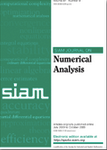
SIAM JOURNAL ON NUMERICAL ANALYSIS
Elevating Standards in Computational ExcellenceSIAM Journal on Numerical Analysis, published by SIAM Publications, is a leading academic journal dedicated to the rigorous exploration of numerical methods and algorithms across applied and computational mathematics. Since its inception in 1969, this journal has played a pivotal role in advancing the field, achieving a distinguished impact factor that places it in the Q1 quartile for Applied Mathematics, Computational Mathematics, and Numerical Analysis as of 2023. With Scopus rankings reflecting its high influence (Rank #102 in Applied Mathematics and Rank #16 in Numerical Analysis), this journal serves as an essential resource for researchers, professionals, and students aiming to stay abreast of cutting-edge developments in numerical methods. The journal's comprehensive scope covers theoretical advancements, implemented algorithms, and applications, making it indispensable for those engaged in high-level quantitative research and practice. Readers can access a wealth of innovative studies and insights, fostering a deeper understanding of numerical analysis techniques and their practical applications.
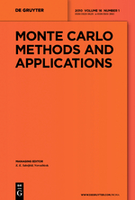
Monte Carlo Methods and Applications
Bridging Theory and Practice in Monte Carlo MethodologiesMonte Carlo Methods and Applications is an esteemed academic journal published by WALTER DE GRUYTER GMBH based in Germany, specializing in the fields of applied mathematics and statistics. With its ISSN 1569-3961 and E-ISSN 0929-9629, the journal has made significant contributions to the methodology and application of Monte Carlo techniques since its inception in 1995. As a vital resource for researchers, professionals, and students, it provides a platform for disseminating cutting-edge research, innovative methodologies, and diverse applications related to Monte Carlo simulations. Despite its current standing in the Q4 category for both applied mathematics and statistics, the journal is poised for growth and engagement within the academic community, helping to bridge the gap between theoretical advances and practical implementations. The journal's emphasis on rigorous peer-reviewed content ensures the highest quality of publications, making it a reliable source for pivotal insights in the realm of probabilistic modeling and computation.

Computation
Advancing knowledge through computational insights.Computation, published by MDPI, is an esteemed open-access journal that has been contributing to the fields of applied mathematics and computer science since its inception in 2013. With an E-ISSN of 2079-3197, this Swiss-based journal operates under a philosophy of free knowledge dissemination, allowing researchers, professionals, and students globally to access high-quality content without financial barriers. Recognized for its rigorous peer-review process, Computation is currently categorized in the Q2 and Q3 quartiles across significant domains, including Applied Mathematics (#181/635), Theoretical Computer Science (#52/130), and Modeling and Simulation (#138/324). As it converges towards 2024, the journal continues to attract innovative and impactful research aimed at advancing theoretical frameworks and practical applications within these disciplines. Joining the Computation community not only enriches individual research portfolios but also contributes to the broader conversation on computational methodologies and their applications in solving real-world problems.
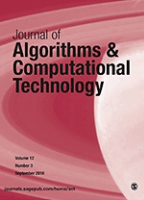
Journal of Algorithms & Computational Technology
Pioneering Discoveries in Numerical Analysis and BeyondJournal of Algorithms & Computational Technology, published by SAGE PUBLICATIONS LTD, serves as a noteworthy platform for scholars and practitioners in the realms of applied mathematics, computational mathematics, and numerical analysis. With an ISSN of 1748-3018 and an E-ISSN of 1748-3026, this Open Access journal has been disseminating high-quality research since 2007, ensuring that significant advancements in algorithmic techniques and computational methodologies are readily accessible to the global academic community. Based in the United Kingdom, this journal has steadily established itself within specialized quartiles, notably achieving Q3 ranking in Computational Mathematics and Q4 in both Applied Mathematics and Numerical Analysis for 2023, reflecting its growing influence in these fields. As the journal converges from 2011 to 2024, it aims to cater to the needs of researchers, professionals, and students by publishing innovative research that not only addresses theoretical frameworks but also provides practical applications. By leveraging its open-access model, the Journal of Algorithms & Computational Technology fosters a collaborative environment where knowledge can flourish, allowing for the continuous evolution of algorithms that drive technological advancement.
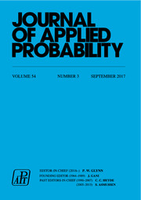
JOURNAL OF APPLIED PROBABILITY
Bridging Theory and Practice in ProbabilityJOURNAL OF APPLIED PROBABILITY is a prestigious peer-reviewed journal published by Cambridge University Press, focusing on the intricate interactions between probability theory and its applications in diverse scientific fields. With a rich history dating back to 1975, this journal caters to an audience of researchers, professionals, and students interested in advancing their knowledge in areas such as mathematics, statistics, and decision sciences. The journal thrives in the competitive landscape of academia, boasting a respectable impact factor and earning Q2 rankings in both Mathematics and Statistics categories as of 2023. It provides a platform for innovative research and methodologies that bridge theoretical concepts with real-world applications, thereby enriching the discipline of applied probability. Although it is not an open-access journal, the JOURNAL OF APPLIED PROBABILITY ensures comprehensive access options through institutional subscriptions, making it a vital resource for anyone engaged in sophisticated probabilistic analysis and its practical implementations.
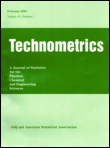
TECHNOMETRICS
Championing High-Quality Research in Quantitative FieldsTECHNOMETRICS, established in 1959 and published by Taylor & Francis Inc, serves as a premier journal in the fields of applied mathematics, modeling and simulation, and statistics and probability. With its ISSN number 0040-1706 and E-ISSN 1537-2723, the journal has successfully converged over its decades-long history and is recognized for its substantial contributions to the quantitative analysis and application of statistical methods. TECHNOMETRICS is proud to maintain a distinguished reputation, ranking in the Q1 category for 2023 across its relevant fields, and positioning itself within the top 86th percentile in Mathematics _ Statistics and Probability as per Scopus rankings. While this journal currently does not operate under an open access model, it remains a crucial resource for researchers, professionals, and graduate students seeking insights and advancements in the realm of statistical methodologies and applications. Its commitment to disseminating high-quality research ensures it stands as an invaluable platform for innovation and scholarly discourse within the statistical community, making it essential reading for anyone interested in the evolution of applied statistical techniques.
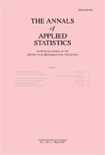
Annals of Applied Statistics
Transforming Data into Knowledge Through Rigorous AnalysisThe Annals of Applied Statistics, published by the Institute of Mathematical Statistics (IMS), is a leading academic journal that serves as a crucial repository for groundbreaking research in the fields of statistics and probability applications. Since its inception in 2008 and continuing through 2024, this journal has established itself as an influential platform with a notable reputation, boasting a prestigious Q1 classification in 2023 across critical categories such as Modeling and Simulation and Statistics, Probability, and Uncertainty. With its rigorous peer-review process and significant Scopus rankings—including a position of #78 in Statistics and Probability—Annals of Applied Statistics aims to foster innovative statistical methods and their applications in a variety of disciplines. Researchers, professionals, and students interested in the latest advancements in analytical methods will find this journal essential for navigating the evolving landscape of applied statistics. The journal does not offer open access options, ensuring that published content reflects the highest academic standards.
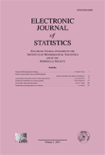
Electronic Journal of Statistics
Elevating the Standards of Statistical ExcellenceElectronic Journal of Statistics, published by INST MATHEMATICAL STATISTICS-IMS, is a premier open-access platform dedicated to the field of statistics and probability, with a remarkable track record since its inception in 2007. With an ISSN of 1935-7524, this journal has quickly established itself as a leading resource within the top Q1 category in both Statistics and Probability, as well as Statistics, Probability and Uncertainty, highlighting its significance and impact in the academic community. The journal’s commitment to disseminating high-quality research allows researchers, professionals, and students to access valuable findings and methodologies that contribute to the advancement of statistical sciences. With its convergence set to continue until 2024, the Electronic Journal of Statistics remains a vital source for scholars looking to enrich their knowledge and engage with cutting-edge statistical theories and applications.
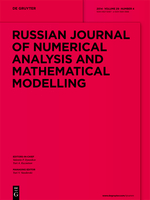
RUSSIAN JOURNAL OF NUMERICAL ANALYSIS AND MATHEMATICAL MODELLING
Empowering Research through Rigorous Computational TechniquesRUSSIAN JOURNAL OF NUMERICAL ANALYSIS AND MATHEMATICAL MODELLING, published by WALTER DE GRUYTER GMBH in Germany, is a vital resource for researchers and practitioners in the fields of numerical analysis, mathematical modeling, and computational mathematics. With an ISSN of 0927-6467 and an E-ISSN of 1569-3988, this journal has been disseminating significant findings since its inception in 1986 and continues to do so into 2024. Despite its current position in Q4 category quartiles and modest Scopus rankings, it provides a platform for innovative research that contributes to the evolution of modeling and simulation techniques. The journal is committed to fostering an understanding of complex numerical methods and their applications across various scientific disciplines. Although it does not provide Open Access options, it remains a key publication that underscores the importance of rigorous mathematical analysis and its practical implications in today's technology-driven world.